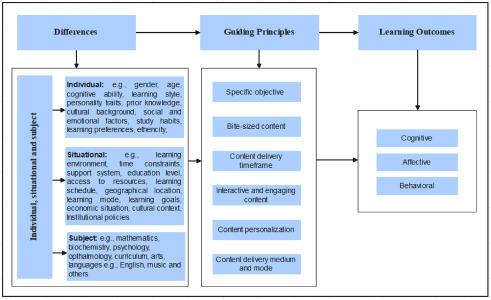Microlearning vs. Traditional Methods: What Do Students Really Prefer in 2024?
In the rapidly evolving world of education, the debate between microlearning and traditional learning methods is more relevant than ever. With the rise of digital platforms and changing student preferences, understanding what truly engages learners in 2024 is essential for educators, institutions, and anyone interested in the future of learning.
Introduction: The Shift in Learning Preferences
Over the past decade, the education landscape has transformed dramatically. Driven by technological advancements, students today have access to a diverse range of learning approaches. microlearning—short,focused lessons delivered digitally—has emerged as a popular option to traditional methods that typically involve longer lectures,textbooks,and scheduled classroom sessions. In an era defined by fast-paced lifestyles and ever-shorter attention spans, what do students really prefer in 2024?
Understanding Microlearning and Traditional Methods
What is Microlearning?
- Bite-sized content: Short modules (typically 3–7 minutes), focused on a single topic or skill.
- Digital Accessibility: Delivered via apps, online platforms, or mobile devices.
- Flexible Scheduling: Learners choose when and were to study.
- Interactivity: Frequently enough includes quizzes, videos, and gamification elements.
What are Traditional Learning Methods?
- Structured Curriculum: In-depth curriculum with fixed schedules.
- Face-to-Face Instruction: Classroom-based teaching led by educators.
- Textbooks and Notes: Relies on written content and printed material.
- Longer Lessons: Extended lectures,group projects,and exams.
microlearning vs. Traditional Methods: What Do Students Prefer?
In 2024, student preferences have shifted towards more flexible and interactive learning experiences. Here’s what recent student surveys and expert studies reveal:
- 74% of students reported higher engagement with microlearning modules than traditional classroom lessons.
- 68% cited flexibility as a key factor in choosing microlearning over scheduled classes.
- 52% preferred a blend of both methods, combining the strengths of each approach.
Microlearning is especially favored by adult learners and those juggling work and study,while younger students with less self-management experience still find value in structured traditional environments.
Key Benefits of Microlearning
1. Increased Engagement and Retention
Short, focused lessons help students maintain attention, absorb facts quickly, and remember key concepts longer.
2. Personalized Learning Experience
Students can learn at their own pace, revisit modules if needed, and tailor their education to individual needs.
3. Just-in-Time Learning
Microlearning empowers learners to access specific information at the moment of need—ideal for professional training and skill-building.
Strengths of Traditional Learning Methods
1. Depth of Understanding
Comprehensive lessons dive deep into complex topics, fostering critical thinking and analysis.
2.Social Interaction and collaboration
Face-to-face environments encourage teamwork, communication skills, and networking opportunities.
3. Established Support Systems
Students benefit from direct instructor guidance, academic counseling, and learning resources available on campus.
Comparative Table: Microlearning vs. Traditional Methods
| Features | Microlearning | Traditional Methods |
|---|---|---|
| Lesson Length | 3–7 minutes | 45–90 minutes |
| Accessibility | Anytime, anywhere (mobile & online) | On campus, classroom |
| Interaction | Gamified, interactive content | In-person collaboration, discussion |
| Flexibility | High, self-paced | Low, fixed schedule |
| Content Depth | Focused, single-topic | Comprehensive, multi-topic |
Case Studies: Real-World Experiences in 2024
Case Study 1: University Course Redesign
A top European university recently piloted microlearning modules for its introductory programming course. Students received short video lessons, followed by swift formative assessments. Results showed:
- Completion rates increased by 27% compared to traditional lectures.
- Average quiz scores improved by 16%.
- Students reported feeling “less overwhelmed” and “more motivated.”
Case Study 2: Corporate Training for Young Professionals
Telecom giant XYZ incorporated microlearning for onboarding and compliance training. Employees accessed modules via their phones during gaps in daily schedules.
- Training costs reduced by 35%.
- Employee satisfaction scores rose by 22%.
- Faster time-to-productivity reported among new hires.
First-Hand Student perspectives
“I love microlearning because I can study on my commute and take small breaks between modules. It fits perfectly with my busy schedule.” – Sophia, Business Student
“While microlearning is great for quick updates, nothing replaces the depth and group discussions of our traditional classes.” – Michael, engineering Student
These diverse perspectives highlight that student preferences often reflect learning goals, lifestyles, and subject complexity.
Practical Tips: Blending Microlearning with Traditional Methods
- Identify Core Concepts: Use microlearning for foundational topics and revision; use traditional methods for complex projects and deep analysis.
- Leverage Digital Tools: Incorporate apps, video platforms, and interactive quizzes to reinforce classroom instruction.
- Encourage Collaboration: Pair digital micro-modules with in-person group sessions to foster teamwork and discussion.
- Solicit Feedback: Regularly survey students to monitor effectiveness and adjust teaching methods accordingly.
SEO Insights: Popular Keywords in 2024
For educational planners and instructional designers wishing to boost search engine visibility, target keywords such as microlearning benefits, student preferences 2024, traditional vs microlearning, online education trends, and blended learning strategies. Incorporate them naturally throughout web content and optimize meta tags for higher ranking.
Conclusion: The Future of Learning preferences
As we navigate 2024, it’s clear that microlearning is here to stay, offering convenience, retention, and adaptability for today’s learners. Though, traditional educational methods continue to deliver value, especially when deeper engagement and collaborative skills are required. The future lies in a blended approach, harnessing the strengths of both worlds to meet diverse student needs and drive educational success.
Whether you’re an educator, student, or organizational leader, understanding and integrating microlearning alongside tried-and-true methods is the key to unlocking a richer, more engaging learning experience in the digital age.
Microlearning vs. Traditional Methods: Prepare your institution for the evolving preferences of students in 2024 by staying ahead of educational trends and adopting flexible, innovative teaching strategies.

